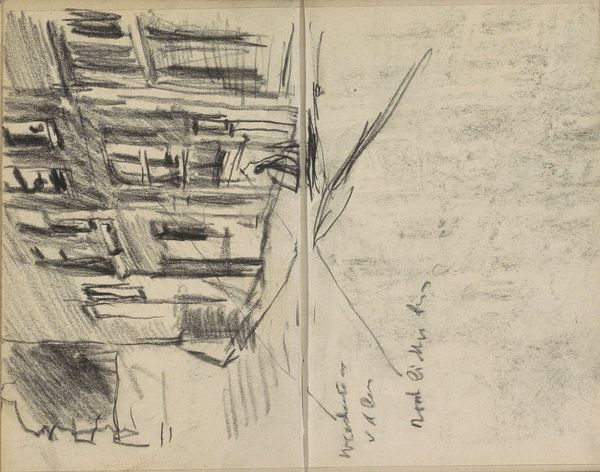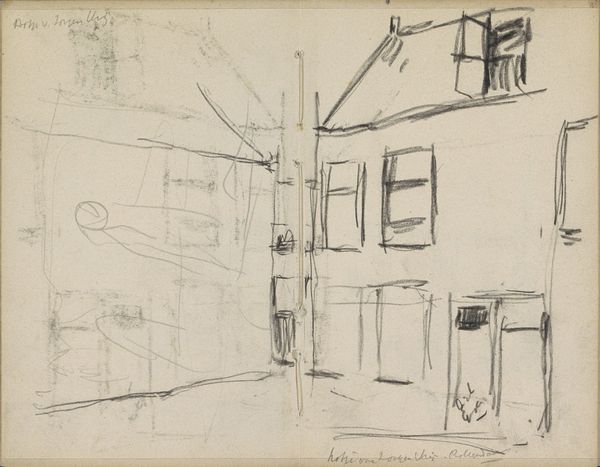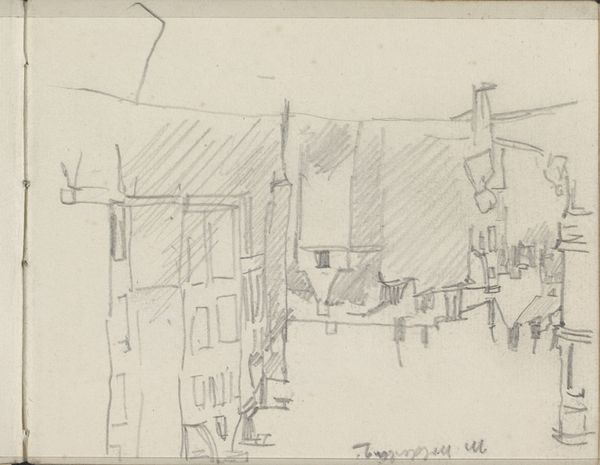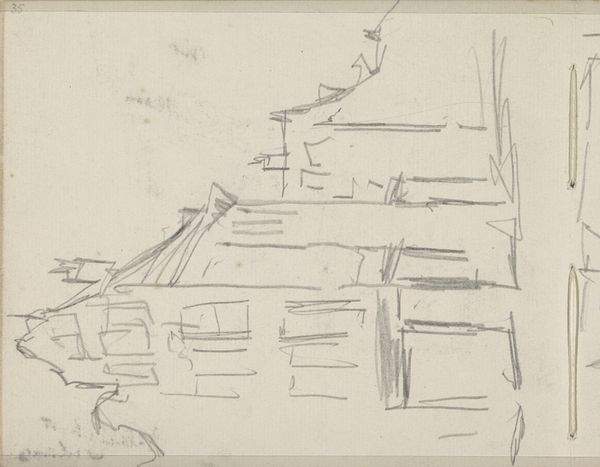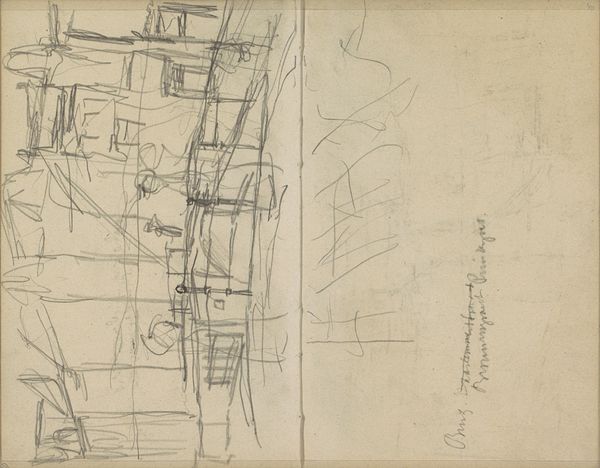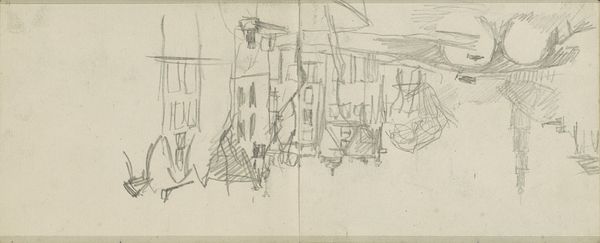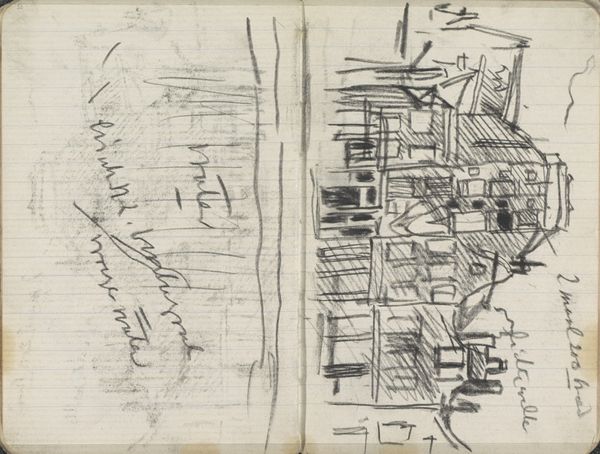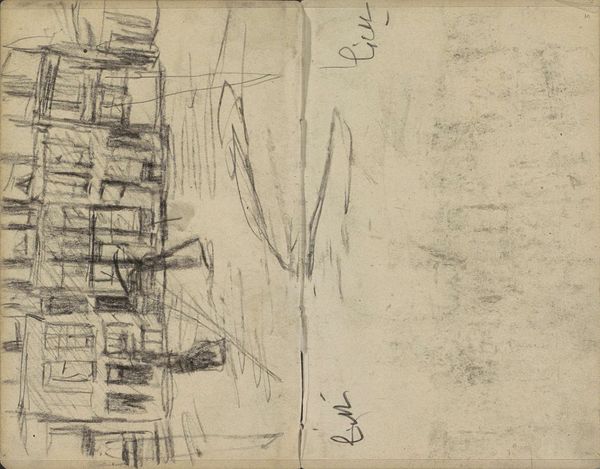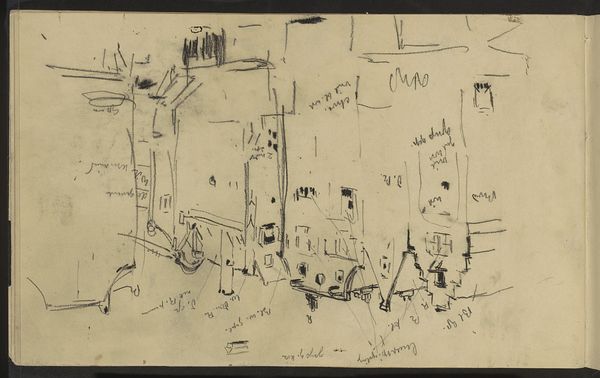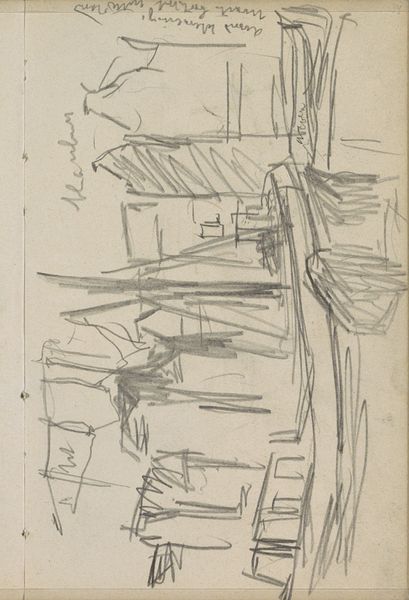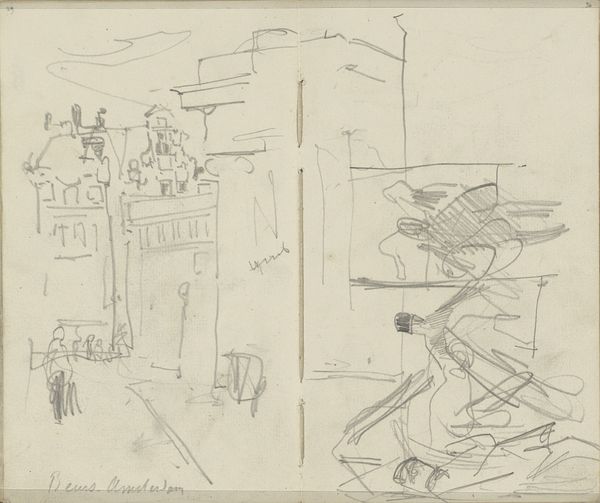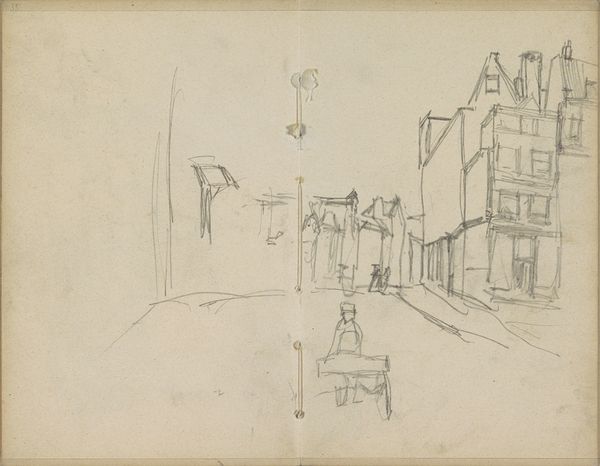
Gezicht op de Paleisstraat te Amsterdam bij schemer c. 1886 - 1891
0:00
0:00
georgehendrikbreitner
Rijksmuseum
drawing, pencil
#
drawing
#
impressionism
#
pencil
#
cityscape
#
street
Copyright: Rijks Museum: Open Domain
Editor: This drawing is entitled "View of the Paleisstraat in Amsterdam at Twilight," and it's by George Hendrik Breitner, dating from around 1886 to 1891. It's a pencil drawing, and I find it very evocative despite its unfinished quality. What strikes you most about this cityscape? Curator: I see a negotiation between public and private space, illuminated, but only partially revealed, by the ambiguous light. Breitner, deeply engaged with the burgeoning industrialization and its impact on urban life, presents not just a street, but a stage. The sketch-like quality isn't just a stylistic choice, it is, I argue, deliberate. It reflects the fleeting, often obscured, experiences of city dwellers – especially those marginalized by gender and class. Editor: A stage? How so? Curator: Think about the Paleisstraat at that time. Rapid urbanization meant shifts in social dynamics, particularly for women entering the public sphere. Breitner's perspective—the slightly blurred figures, the suggestion of light—invites us to consider whose stories are being told, and from what viewpoint. Is this street accessible and safe for all its inhabitants? This is not a mere snapshot. It's a prompt. Editor: I hadn't considered that. So, the 'unfinished' feel is almost a challenge to the viewer to complete the narrative, to fill in the blanks for those unseen or unheard? Curator: Precisely! And think about Impressionism as more than just a style, but as a movement concerned with representing the instability and precarity of modern life. Breitner captures the moodiness of an era grappling with immense change. Editor: That's given me a completely new perspective on it! I always thought of Impressionism as pretty, but not necessarily political. Curator: Art is rarely neutral. By focusing on everyday moments, Impressionists often reflected, either consciously or unconsciously, the societal shifts and power dynamics of their time. Understanding those contexts helps us read these works with a more critical eye.
Comments
No comments
Be the first to comment and join the conversation on the ultimate creative platform.
